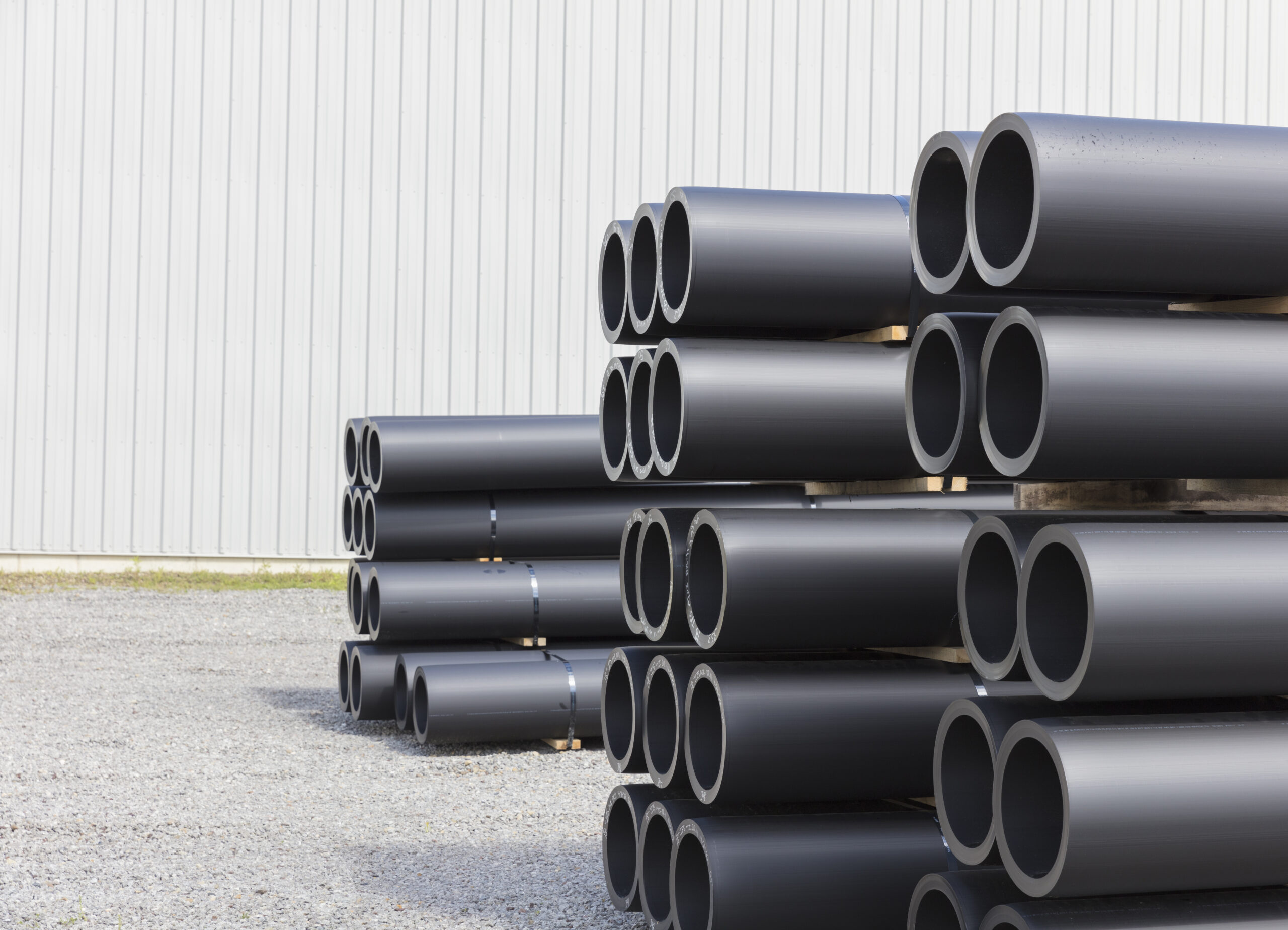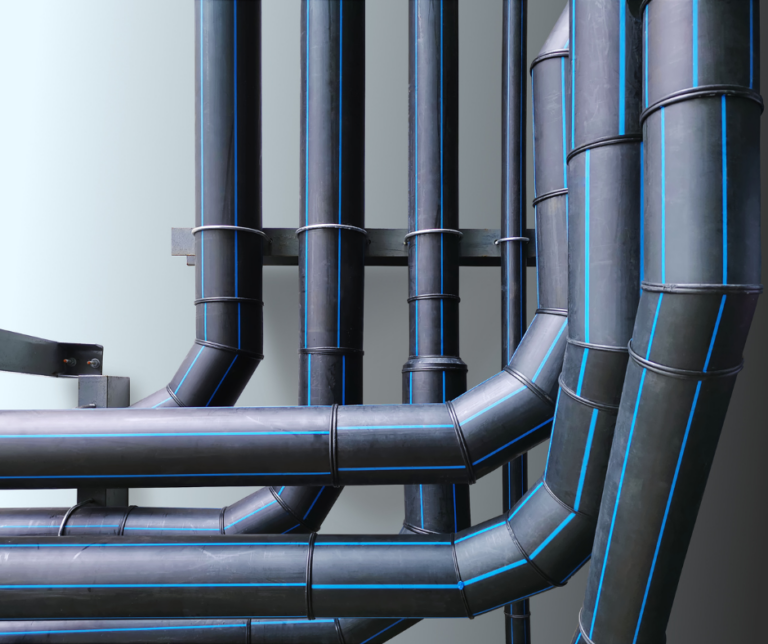The Unique Benefits of Choosing Pipe Supplier American Plastics Midland
Discover the Production Process Behind High-Quality HDPE Pipe and Its Applications
The manufacturing process of high-quality HDPE pipelines is intricate and methodical. It begins with the selection of basic materials that enhance performance. Following this, ethylene goes through polymerization to develop resin, which is then shaped through extrusion. Quality control is vital, making certain that the end product fulfills strict requirements. The journey of HDPE pipelines doesn't end with manufacturing. Their applications across numerous sectors disclose a broader relevance worth checking out.
Recognizing HDPE: Qualities and Advantages

High-density polyethylene (HDPE) is a functional polycarbonate known for its sturdiness and resistance to numerous environmental variables. This product exhibits outstanding tensile strength, making it appropriate for demanding applications. Its low-density framework adds to a lightweight item, promoting ease of dealing with and installation. HDPE likewise showcases remarkable resistance to chemicals, which lessens degradation when exposed to rough compounds.
The product's low wetness absorption further improves its longevity, making it ideal for usage in pipes and tank. Additionally, HDPE is immune to ultraviolet (UV) radiation, guaranteeing that items keep their stability also when revealed to sunlight. In addition, its flexibility enables for the production of elaborate forms without jeopardizing toughness. The eco-friendly nature of HDPE, commonly originated from recycled materials, contributes to its charm, promoting sustainable methods in manufacturing. Generally, these residential properties and advantages make HDPE a recommended option for numerous industrial and consumer applications.
Basic Material Choice for HDPE Manufacturing
The choice of raw products for HDPE production is important to validate the end product satisfies the preferred specs and high quality standards. High-density polyethylene (HDPE) is largely produced from polymerized ethylene, originated from nonrenewable fuel sources such as all-natural gas or petroleum. The quality of these feedstocks considerably affects the mechanical and thermal residential properties of the last HDPE.
Ingredients likewise play a significant duty in improving HDPE's efficiency, including anti-oxidants, UV stabilizers, and colorants, which boost durability and resistance to ecological factors. The choice procedure need to consider not just the chemical make-up of the raw products however likewise their handling characteristics to assure effective production.
Moreover, the sourcing of raw products should focus on sustainability and compliance with ecological guidelines, as responsible practices are essential in today's market. Eventually, cautious basic material choice lays the foundation for producing high-grade HDPE pipes suitable for varied applications.
The Extrusion Refine: Forming HDPE Pipe
The extrusion process plays an important function fit HDPE pipes, starting with careful material prep work strategies that guarantee perfect flow and uniformity. Equally crucial is the style of the die, which directly influences the last measurements and surface quality of the pipe. Together, these factors add greatly to the effectiveness and top quality of HDPE pipe manufacturing.
Material Preparation Strategies
Efficient production of HDPE pipes begins with careful product preparation strategies, specifically the extrusion procedure. Throughout this stage, high-density polyethylene resin is first dried to eliminate moisture, making sure optimal circulation features. The material is after that fed right into the extruder, where it undertakes home heating and melting, transforming into a thick state. This heating process is thoroughly regulated to keep the product's integrity and performance. The molten HDPE is required with a die, shaping it into a continual pipe kind. Correct temperature level administration during extrusion is crucial, as it directly affects the material's residential properties and the end product quality. Once shaped, the HDPE pipe is cooled down and reduced to specified lengths, prepared for subsequent handling and applications.
Die Style Significance
Precision in die design plays an important role in the extrusion procedure of HDPE pipes. The die works as the last shaping tool, straight influencing the pipe's dimensions, wall surface density, and surface area finish. A well-designed die guarantees consistent product flow, decreasing defects such as abnormalities and weak spots. The geometry of the die must be maximized to fit the particular residential properties of HDPE, including its viscosity and thermal habits during extrusion. Furthermore, the cooling rate of the product as it travels through the die can substantially influence the pipe's architectural stability. Consequently, buying advanced die modern technology is crucial for manufacturers aiming to generate top quality HDPE pipelines that meet market requirements and customer assumptions.
Top Quality Control Measures in HDPE Manufacturing
Although different factors influence the high quality of HDPE pipeline production, reliable quality control actions are crucial to guarantee consistency and reliability in the last product. Key high quality control methods include strenuous material evaluation, verifying that the raw polyethylene fulfills well established requirements for pureness and thickness. Throughout the extrusion process, criteria such as temperature, pressure, and cooling time are closely monitored to keep dimensional accuracy and structural stability
In enhancement, post-production screening is crucial; producers typically conduct hydrostatic examinations to examine the pipe's strength and resistance to stress. Visual evaluations for surface area problems even more improve quality control. Certification from pertinent requirements companies, like ASTM or ISO, gives an added layer of reputation. By implementing these thorough quality control procedures, makers can decrease problems, improve efficiency, and make sure that the HDPE pipelines meet the particular needs of different applications, ultimately causing client contentment and rely on the item.
Applications of HDPE Pipeline Throughout Industries
HDPE pipes are made use of throughout various markets as a result of their durability and convenience. In water circulation systems, they ensure efficient shipment, while in wastewater management, they offer trusted services for waste transportation. Additionally, farming irrigation networks take advantage of HDPE's resistance to rust and adaptability, making it an excellent choice for modern farming methods.

Water Distribution Systems
A considerable number of sectors depend on high-density polyethylene (HDPE) pipelines for reliable water circulation systems. Understood for their sturdiness and resistance to deterioration, HDPE pipelines are extensively made use of in local water networks, farming watering, and commercial applications. Their lightweight nature facilitates easy handling and setup, minimizing labor expenses and time. Furthermore, HDPE pipes can suit different stress levels, making them ideal for both reduced and high-pressure systems. hdpe pipe suppliers Midland TX. The adaptability of the material enables for seamless combination right into existing facilities, minimizing the requirement for extensive excavation. Additionally, HDPE's resistance to chemical seeping assurances that the water supplied continues to be safe and tidy, making it an excellent selection for maintaining the high quality of potable water throughout different industries
Wastewater Management Solutions
Effective water circulation systems also pave the way for ingenious wastewater monitoring solutions, where high-density polyethylene (HDPE) pipes play a considerable role. Popular for their resilience and resistance to rust, HDPE pipelines are perfect for delivering wastewater in different settings. Their flexibility permits simple installation in intricate settings, minimizing the need for substantial excavation. Furthermore, HDPE's smooth interior surface minimizes rubbing, improving circulation prices and effectiveness. These pipes are also immune to chemical leaching, making certain that contaminants do not jeopardize the surrounding atmosphere. Industries, districts, and treatment more info facilities significantly count on HDPE pipes for their dependability and longevity, making them a favored choice for modern-day wastewater monitoring systems. This versatility emphasizes the important importance of HDPE pipes across many applications.
Agricultural Watering Networks
Agricultural watering networks benefit greatly from using high-density polyethylene (HDPE) pipes, which give efficient and dependable water shipment to crops. HDPE pipelines are light-weight, making them easy to transfer and install, while their adaptability enables various arrangements in varied terrains. These pipelines demonstrate excellent resistance to deterioration, chemicals, and UV radiation, making sure resilience in harsh farming environments. In addition, their smooth indoor surface area decreases friction loss, maximizing water flow and reducing energy prices related to pumping. The long life of HDPE pipes, frequently going beyond 50 years, adds to decrease maintenance and replacement expenditures. Farmers increasingly count on HDPE pipes to enhance watering performance and promote sustainable farming techniques, ultimately leading to improved crop yields and resource preservation.

Future Patterns in HDPE Pipeline Innovation
As the need for sustainable and effective framework expands, improvements in HDPE pipeline technology are positioned to change different industries. Arising fads include the combination of clever innovations, such as sensing units and IoT capabilities, which assist in real-time monitoring of pipe conditions, minimizing upkeep expenses and protecting against leaks. In addition, the advancement of sophisticated production strategies, such as 3D printing, is enabling the manufacturing of complicated, personalized pipeline layouts that deal with certain project needs.
Additionally, the focus on recycling and circular economic situation practices is driving the development of HDPE pipes made from recycled materials, improving sustainability. Improved jointing techniques, such as electro-fusion and mechanical fittings, are also enhancing setup efficiency and reliability. Finally, the expanding emphasis on environmental policies is pushing makers to embrace greener manufacturing procedures, making certain that HDPE pipelines not just satisfy industry criteria but additionally cultivate an even more sustainable future for framework growth.
Regularly Asked Concerns
Exactly How Does HDPE Compare to Other Plastic Products?
HDPE outperforms several other plastic materials concerning resilience, chemical resistance, and adaptability. Its low thickness and high tensile stamina make it optimal for various applications, usually surpassing choices in both performance and durability.
What Are the Environmental Effects of HDPE Manufacturing?
The environmental effects of HDPE manufacturing include greenhouse gas exhausts, power consumption, and possible air pollution from producing procedures. Additionally, incorrect disposal can lead to soil and water contamination, elevating concerns regarding lasting environmental results.
Can HDPE Pipeline Be Reused?
Yes, HDPE pipelines can be recycled. Several centers approve made use of HDPE for handling, transforming it right into new products. This reusing adds to sustainability initiatives, minimizing plastic waste while saving resources and energy in the manufacturing cycle.
What Is the Lifespan of HDPE Pipeline?

How Do Temperature Level Variants Affect HDPE Pipe Efficiency?
Temperature variants significantly impact HDPE pipe performance, affecting versatility and stamina. Heats can bring about softening, while low temperature levels might cause brittleness, ultimately affecting the pipe's toughness and viability for numerous applications in varied environments.